- Joined
- 28 December 2013
- Posts
- 6,392
- Reactions
- 24,319
The Aqua and Light Blue were much clearer!
Aqua is best by far on my smartphone if it helps
Thank you for your input - I'll change the bar colour to Aqua.
Skate.
The Aqua and Light Blue were much clearer!
Aqua is best by far on my smartphone if it helps
Added a new one this week AKE.
It's exciting to experience how other traders make their stock selection & the methodology that decides when a position is to be entered. My go-to is either the Monthly, Weekly or Daily "Ducati Blue Bar Strategy" to understand the reasoning a little better.
"The Ducati Blue Bar Strategy" is easy to understand as the first "Blue Bar" is the signal bar, meaning we enter the position on the next day at the open. We sell the position on the 2nd red bar as the first "red" bar is the signal bar.
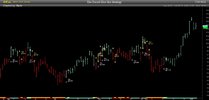
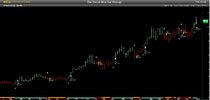
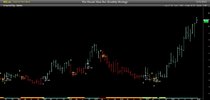
can I please suggest a 30 weekly ema moving average. i find that stock moving above this line should be considered Bullish. Stocks below at a loss. This is probable as a long term position and i thought it may be something you would like to try as a support base line.
who knows how many people are now going to look at the 30wema
Having said that, I really don't think it matters a whole lot which MAs one uses. It is only an indicator after all.
Trading with an edge
An edge comes in many forms but it's all about consistency.

 www.aussiestockforums.com
www.aussiestockforums.com


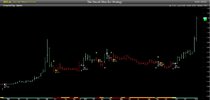

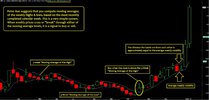
But if you find unique trading opportunities no one else can spot, do you not go by definition against the trend?Lagging Indicators
I have to re-iterate that both the Simple Moving Average (SMA) & Exponential Moving Average (EMA) are lagging technical indicators. The Exponential Moving Average (EMA) uses calculations to smooth out the inherent lag time of the (SMA). In simple terms, both moving averages are a "graphic line" on a price chart, that's all.
3-Week High/Low Trading Strategy
First, you need to keep in mind that "moving averages" are not magical tools. But, by using two moving averages with the same period, follows the price strength with one simple twist. Defining the average of the lows & highs creates a zone, a band, or channel to use another phrase. Everything is simple with this strategy as we trade once we break above or below the 3-period band.
(BRN) used as the example
It's exciting when experienced traders suggest a stock selection & the 3-Week Moving Average Chart displays the buy position for (BRN) that @tech/a has suggested.
View attachment 135733
Summary
Using the "Moving Average price band" combines the power of using multiple moving averages of the same periods but using different forms of calculations. This technique allows you to find unique trading opportunities that no one else is able to spot.
Skate.
But if you find unique trading opportunities no one else can spot, do you not go by definition against the trend?
Is not trend trading in essence trading with the masses?
Toying with you Mr Skate ?
Hi Skate,
Is the WMA an opttion for use with that system?
Just wondering.
Hi Skate,
Is the WMA an opttion for use with that system?
Just wondering.
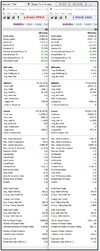
M8, can I ask what term WMA you used - those results just do not make sense IMOWonder no longer
@DrBourse made a suggestion of using the weighted moving average to form a 3-Week Moving Average Channel rather than a Simple Moving Average Channel. Every metric across the range was worse than expected using (WMA). I've been racking my brain to understand why. The only reason I can come up with is the channel is no longer equal to the average weekly volatility altering the entry & exit points.
View attachment 135763
Summary
The suggestion was sound, assuming the entry & exit points would be more responsive but not so as positions were held longer increasing the drawdown & holding period.
Skate.
M8, can I ask what term WMA you used - those results just do not make sense IMO
A Stale Stop, Trailing Stop & TakeProfit Stop were all applied to the strategy. I must say "the system drawdown" is well beyond my limits as well.
So I guess what I need to know is - Are you using A "Black Box Type System" where you are unable to select your own WMA Settings, or can you use a setting of say 7 or 10 or whatever you want to use - or is it just a case of Hit the Software Prog's WMA Button and then hope for the best ?
I've been racking my brain to understand why. The only reason I can come up with is the channel is no longer equal to the average weekly volatility altering the entry & exit points.

OK, so unless you can select your own "weighted average for the selected period", then it's a "BB System". With all Software Trading Platforms, the crucial thing is that the user "Must be able to Drive EVERYTHING", otherwise we have no idea how their formulas are constructed.
But you still cannot Select your own "weighted average setting eg: 7, 10, 20 , 30, 50 200 etc"
WMA | Moving averages, summation (AmiBroker 40) |
| SYNTAX | wma( ARRAY, periods ) |
| RETURNS | ARRAY |
| FUNCTION | Calculates weighted average. 5 day weighted average gives weight of 5 to the most recent quote, 4 to the previous quote, down to 1 for the 5-bar back quote. The function accepts time-variable periods. |
| EXAMPLE | WMA( Close, 5 ) |
Hello and welcome to Aussie Stock Forums!
To gain full access you must register. Registration is free and takes only a few seconds to complete.
Already a member? Log in here.